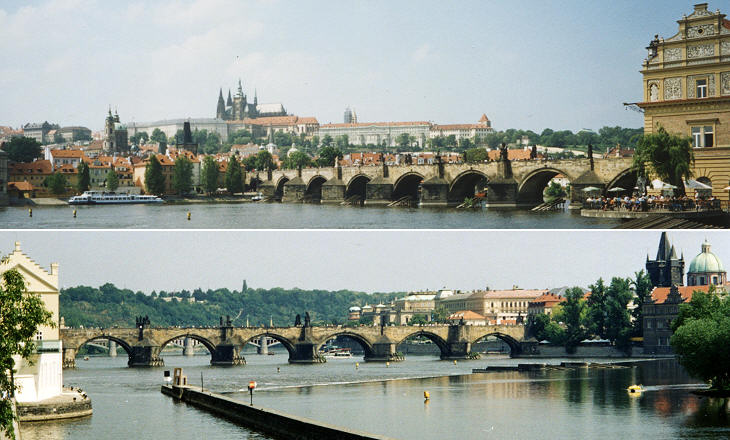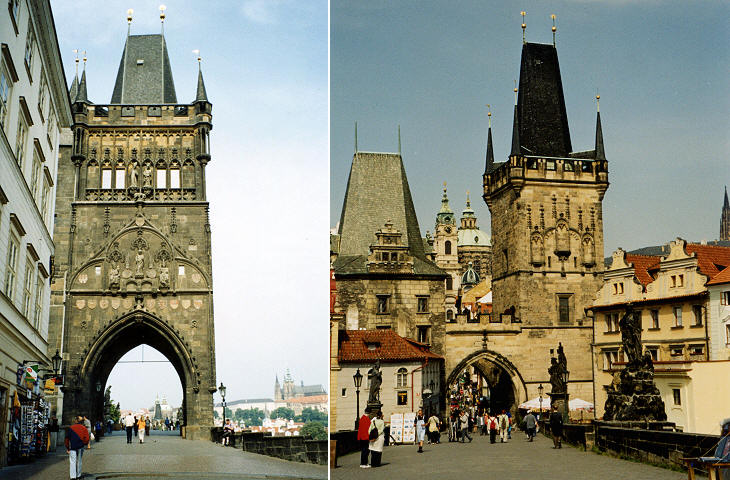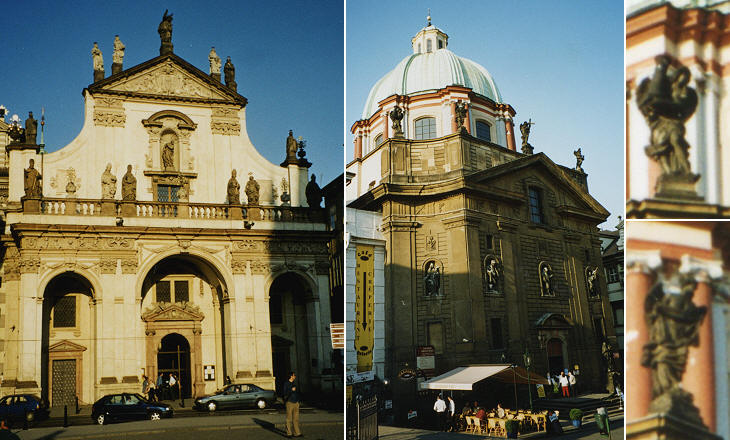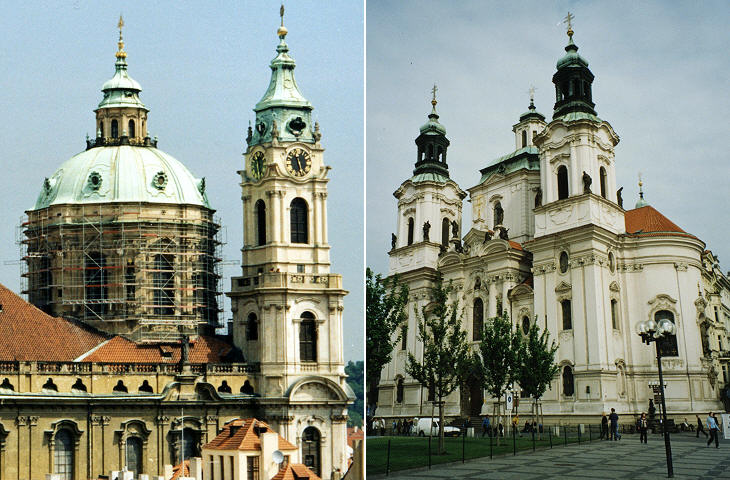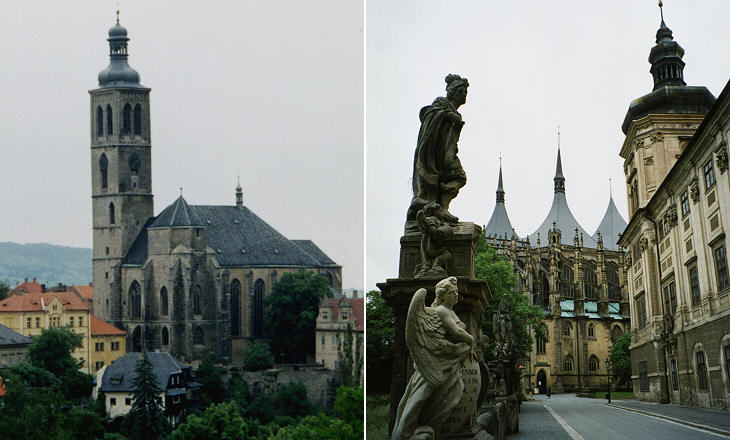  What's New! Detailed Sitemap All images © by Roberto Piperno, owner of the domain. Write to romapip@quipo.it. Text edited by Rosamie Moore. |
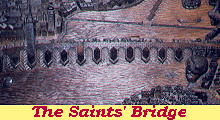 Part one: the bridge Part one: the bridge(detail of a relief showing the bridge in sv. Vita cathedral in Prazsky Hrad) Prague was made at the very beginning (Xth century) of just two fortified hills (Prazsky Hrad and Visehrad), protecting an easy ford of the river Vltava. With the expansion of trade the two sides of the river were linked by a bridge, at first made of timber and later on of stone. In 1357 King Charles IV of Bohemia asked the Swabian architect Peter Parler to replace the existing bridge with a new larger and more reliable bridge. This bridge is named after the king Karluv Most and although it was damaged on more than one occasion by war events or by floods, it is still there. It is made of 15 arches of which only 10 are actually on the river.
Towers Prague is made up of four towns: Hradcany and Mala Strana on the left bank of the river and Stare Mesto and Nove Mesto on the right bank. They had their own defence systems. The access to the bridge from Stare Mesto was protected by an imposing tower (Mostecka Vez) decorated with statues of kings and saints of Bohemia. The access from Mala Strana was protected by two towers: the larger one was added in 1464 and it is almost a twin of Mostecka Vez.
Churches The bridge was part of the coronation procession, which moved from Stare Mesto to the Cathedral of sv. Vita in the Hrad (castle) of Prague. That means that the bridge was evocative of the independence of Bohemia. At the end of the XVIth century Bohemia was no longer an independent country because in 1545 the Austrian Archduke Ferdinand I had obtained the title of King of Bohemia for himself and also for his successors. Most of the population was no longer Roman Catholic, while the Austrian Emperors felt obliged to foster a return to the obeyance to the Church of Rome. The contrast was mitigated for a while by the decision of the Emperor Rudolph II to establish his Court in Prague. At his death the Court was moved back to Vienna and Bohemia was ruled by foreign governors. On May 23, 1618 the imperial governors were thrown out of the window of their apartment in the Royal Palace (Second Defenestration of Prague) . It was one of the starting events of the Thirty Years' War which ended in 1648. The imperial army conquered Prague after the battle of the White Mountain (Bila Hora) in November 1620. The victory was celebrated in Rome as a victory for Christianity and a church was erected to mark the occasion (S. Maria della Vittoria). In Bohemia the process of re-catholicization of the country was led by the Jesuits, who regarded the erection of large and lavishly decorated churches as a way to achieve their objective. The Jesuits of Bohemia had strict links with their center in Rome and they were aware of the developments of Baroque art there. A very large church of the Jesuits (sv Salvator) was built in the first half of the XVIIth century in the square at the beginning of Karluv Most. In the second half of the century another church (sv. Frantisek u krizovniku) was built in the same square and it was crowned with statues of angels holding symbols of the Passion. The statues are almost copies of the statues on Ponte degli Angeli in Rome.
At the beginning of the XVIIIth century the Jesuits started the erection of a very large church (sv. Mikulas) in Mala Strana. This church was clearly visible from the church (sv. Salvator) they had on the other side of the river. At this point the Jesuits thought of giving a new meaning to the bridge by promoting its decoration with statues of saints, having very much in mind Ponte degli Angeli. In 1732-37 another large church was dedicated to sv. Mikulas (Nicholas) in Stare Mesto. The two churches are the finest example of Baroque in Prague and were mainly designed by Cristoph Dientzenhofer and his son Kilian Ignaz. Sv. Mikulas in Stare Mesto clearly shows the influence of Borromini's S. Agnese in Agone.
Kutna Hora The Jesuits decorated in a very similar way with 13 statues of saints the alley in front of their monastery in Kutna Hora, an important mining town 40 miles from Prague. The alley leads from the parish church to the late (and neo-) gothic church of St. Barbara, built by the miners' guild.
Move on to part two: The Saints. Play 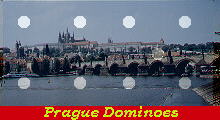 and see and see 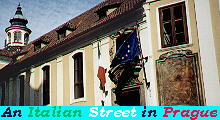 |
